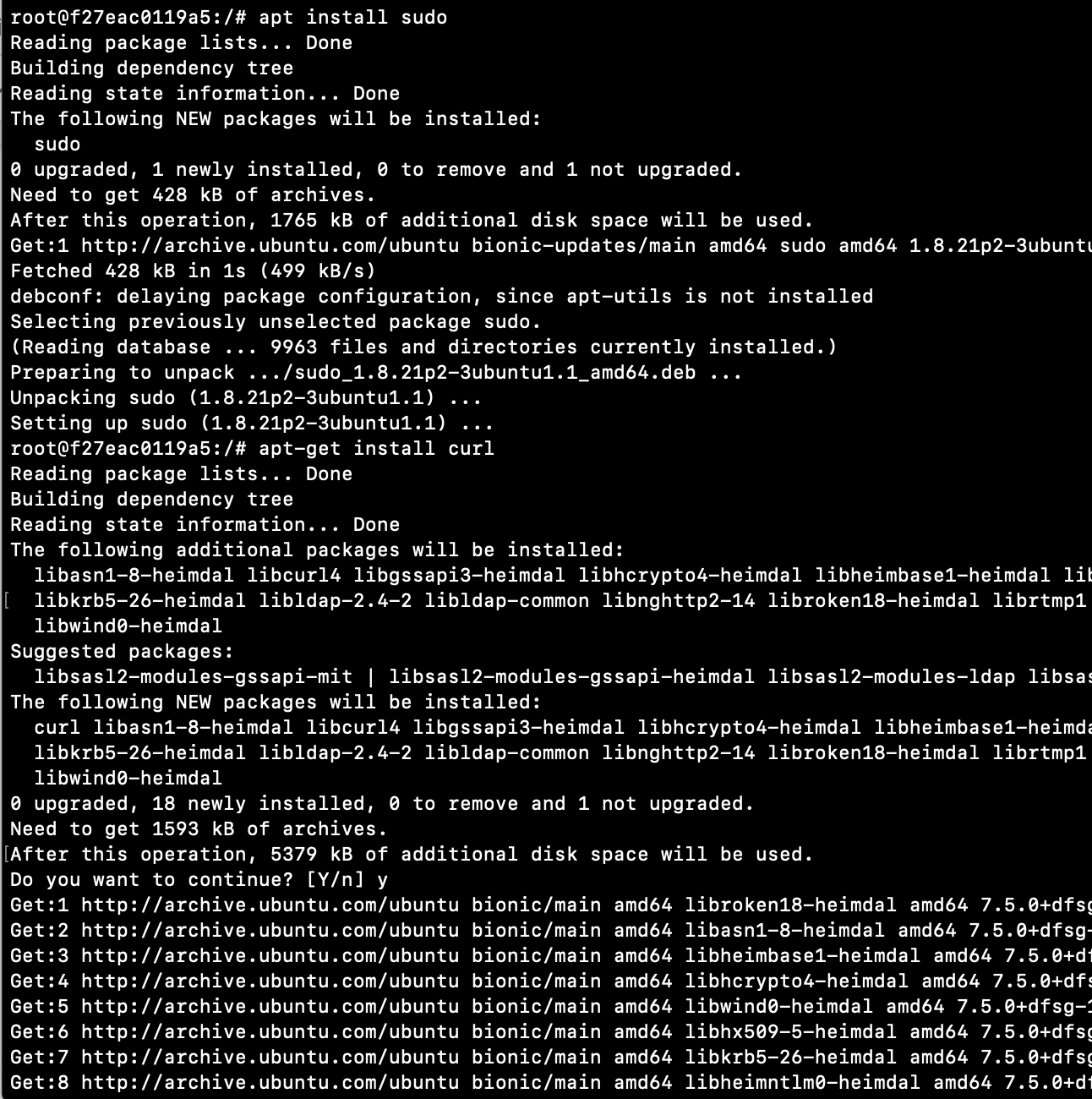

#Sudo apt software
To list the installed software packages on your machine you can use List the installed software packages on Ubuntu Sudo add-apt-repository -y ppa:teejee2008/ppa Utility to simplify re-installation of software packages after upgrading/re-installing Ubuntu-based distributions.įor information on Aptik, try visiting its official page, and for a screenshot click here or view the end of this section.
#Sudo apt install
xargs < package_list.txt apt-get install -y The command we would use to install packages from the file "package_list.txt" is below. Then when you want to install packages from "package_list.txt" you would use this command: xargs package-list.txt You can then use this command to install packages from the created file using: xargs package_list.txt Remove the weird lines at the top of the file using a text editor. To accomplish the bulk installation of the listed packages you'll need to edit 'package_list.txt'. This command should accomplish the creation of a text file containing installed packages: dpkg -l | awk '' > package_list.txt Help out this community wiki - Add up-to-date solutions.
#Sudo apt manual
See the apt-cache(8) and apt.conf(5) manual pages for more information. o=? Set an arbitrary configuration option, eg -o dir::cache=/tmp i Show only important deps for the unmet command. Pkgnames - List the names of all packages in the systemĭotty - Generate package graphs for GraphViz Rdepends - Show reverse dependency information for a package Show - Show a readable record for the packageĭepends - Show raw dependency information for a package Search - Search the package list for a regex pattern

Showpkg - Show some general information for a single packageĭump - Show the entire file in a terse formĭumpavail - Print an available file to stdout Gencaches - Build both the package and source cache **apt-cache is a low-level tool used to query information I'm surprised the apt-cache command designed exactly for this purpose hasn't been mentioned above. Sudo dpkg -set-selections < user-installed.listīefore starting this task, I recommend reading and understanding all parts of the post mentioned in the beginning, and then consult the aptitude reference guide for details on search patterns and the Customizing how packages are displayed to use the -F option as you like. Sed -i 's/$/\tinstall/' user-installed.list Then you can use the list as input to 'dpkg -set-selections' and install the packages with apt-get: scp. On the new server, copy the file using scp, then use sed to append 'install' to every line (-i performs an inline-replace). | cut -f1 | sort -u > default-installed.listĬomm -23 currently-installed.list default-installed.list > user-installed.list Old server (code from other post, output saved to file): aptitude search '~i !~M' -F '%p' -disable-columns | sort -u > currently-installed.list Here's an example using the code from the referenced post, along with modifications to install on the new server. For a VPS or cloud server, your provider may make the images available or you might need to contact them. You'll find something like "ubuntu-12.04.4-desktop-amd64+mac.manifest" that matches your architecture.įor server versions you'll need to obtain the manifest file from the ISO that was used to install the original system. To obtain the manifest file for desktop versions of 12.04 and newer, visit this site, choose your release, and scroll down below the CD images to the files section.
#Sudo apt how to
There's a great explanation on Unix StackExchange that describes how to use aptitude to list packages not installed as dependencies, and how to compare that list with the list of default packages for your Ubuntu release. │ └── maarten-baert_ubuntu_simplescreenrecorder.gpg~ │ ├── maarten-baert_ubuntu_simplescreenrecorder.gpg │ │ ├── maarten-baert-ubuntu-simplescreenrecorder-vivid.list │ │ ├── anton_-ubuntu-dnscrypt-vivid.list

It makes a simple gzipped tar file which can be easily edited and reviewed before restoring on the other machines. Restore to newer release: sudo apt-clone restore-new-distro path-to/ $(lsb_release -sc) Restore backup sudo apt-clone restore path-to/ Make backup sudo apt-clone clone path-to/apt-clone-state-ubuntu-$(lsb_release -sr)-$(date +%F).tar.gz It allows to repack locally installed DEB files.It keeps track of what packages were automatically installed.It preserves all repositories information.It is much better than the dpkg -get-selections solution because:
#Sudo apt upgrade


 0 kommentar(er)
0 kommentar(er)
